The Greater Ani (Crotophaga major) emerges as a charismatic avian species, weaving its distinct identity across the landscapes of the Americas. The Greater Ani is a sight dressed in glossy black plumage adorned with vibrant yellow features.
Its unique behaviours, including communal nesting where multiple pairs collaborate, showcase unparalleled social intricacy within the flock.
The Greater Ani effortlessly captures attention with a slender body, slightly curved bill, and a striking crest. Beyond its visual allure, this bird engages in cooperative foraging and varied vocalizations, adding layers to its fascinating character.
As it gracefully navigates diverse habitats, from grasslands to agricultural fields, the Greater Ani is a testament to nature’s intriguing tapestry in the avian realm. Stay focused.
How to Identify Greater Ani?
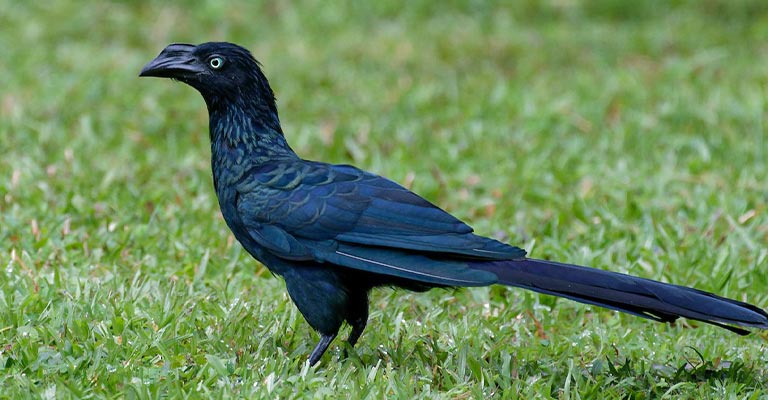
The Greater Ani (Crotophaga major) is a distinctive bird species in various parts of the Americas, known for its striking appearance and unique behaviour.
Identifying these birds requires attention to specific features and behaviours that set them apart from other avian species. Here are some of the key points to help you determine the Greater Ani:
Distinctive Size and Shape
The Greater Ani is a medium to large-sized bird ranging from 38 to 43 centimetres.
It has a slender body, a long tail, and relatively short wings. Its overall appearance is sleek, with a slightly curved bill and a noticeable crest on its head.
Black Plumage
One of the Greater Ani’s most prominent features is its black plumage.
From its head to its tail, the bird displays a glossy black colouration, which makes it stand out in its habitat. The black colouration is uniform, lacking any significant markings.
Yellow Eye and Bill
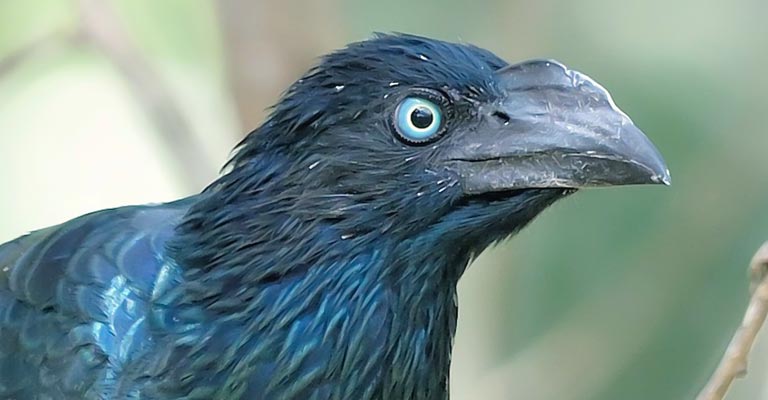
To aid in identification, the Greater Ani possesses a striking yellow eye and a bright yellow bill.
The contrast between the black plumage and these vibrant yellow features is distinctive, making the bird easily recognizable.
Crested Head
The Greater Ani’s head is adorned with a distinctive crest, giving it a somewhat regal appearance. This crest, which consists of elongated feathers, is often raised, especially during displays or when the bird is excited.
Unique Walking Style
When on the ground, Greater Anis exhibit a peculiar walking style. They move with a hopping gait, leaning forward and using both feet simultaneously, which is different from the typical walking behaviour of many other bird species.
Social Behavior
Greater Anis are highly social birds often found in small to large flocks.
Their social behaviour extends to communal nesting, where multiple pairs lay their eggs in a single nest, and all group members contribute to incubation and chick-rearing.
Distinctive Vocalizations
The Greater Ani is known for its varied and distinctive vocalizations. Their calls include a range of croaking, cackling, and whistling sounds.
These vocalizations are often heard during interactions within the flock or as part of their courtship rituals.
Habitat and Range
Understanding the habitat and range of the Greater Ani is crucial for identification. These birds are primarily found in grasslands, savannas, and agricultural fields.
Their range extends from southern Mexico to northern Argentina, encompassing a variety of ecosystems.
Identifying the Greater Ani involves recognizing its size, plumage colouration, distinctive facial features, unique walking style, social behaviour, and vocalizations, and understanding its habitat and range.
Taxonomy of Greater Ani
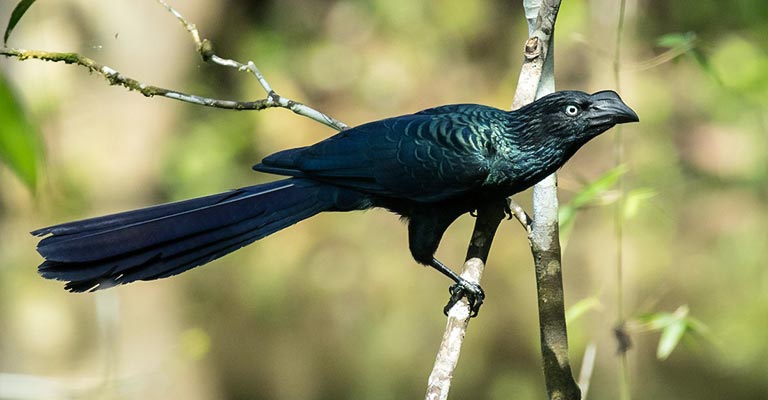
Here’s a table that showcases all the taxonomy details of the Greater Ani:
| Taxonomic Level | Classification |
| Domain | Eukaryota |
| Kingdom | Animalia |
| Phylum | Chordata |
| Class | Aves |
| Order | Cuculiformes |
| Family | Cuculidae |
| Genus | Crotophaga |
| Species | C. major |
The Greater Ani (Crotophaga major) belongs to the family Cuculidae, which encompasses cuckoos and anis. Within this family, it is part of the genus Crotophaga, along with other ani species.
The taxonomy further classifies it under the order Cuculiformes, which includes a variety of bird species known for their distinctive vocalizations and unique nesting behaviours.
The Greater Ani is characterized by its glossy black plumage, yellow facial features, and slender build.
This bird’s taxonomic classification reflects its evolutionary relationships and positions it among the diverse and intriguing species within the avian world.
Hunting Habit of Greater Ani
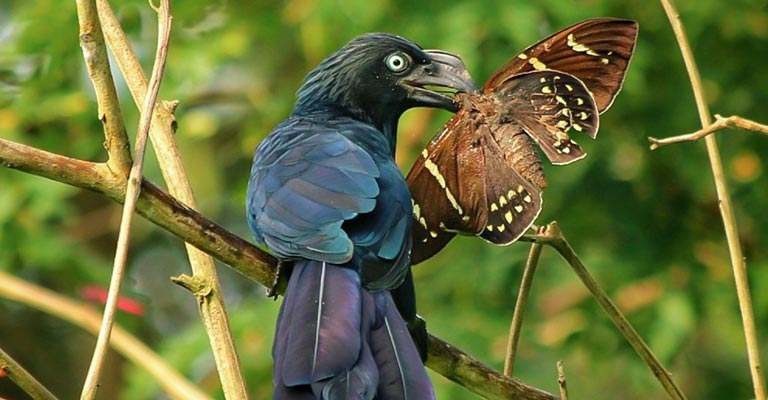
The Greater Ani (Crotophaga major) is not a typical hunter, primarily feeding on insects, small vertebrates, and fruits rather than actively pursuing prey.
These birds are opportunistic foragers with a keen sense of observation. They often glean insects and small animals from the ground using sharp, slightly curved bills.
Additionally, the Greater Ani has a unique feeding behaviour where it cooperatively forages in groups.
This communal hunting strategy involves several individuals working together to flush out insects and small creatures, enhancing their overall hunting efficiency.
While they are not aggressive hunters, their social foraging behaviour allows them to capitalize on the resources in their habitat. It demonstrates the importance of cooperation within the flock for successful feeding.
Greater Ani Life History
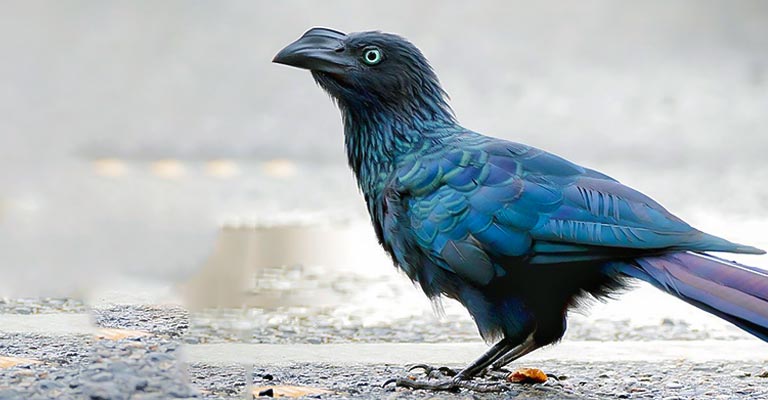
The Greater Ani (Crotophaga major) is a fascinating bird species native to the Americas, known for its striking appearance and unique social behaviours.
Understanding the life history of the Greater Ani involves delving into various aspects of its ecology, reproduction, and conservation.
Here’s a detailed exploration of key elements in the life history of the Greater Ani.
Food
Greater Anis are omnivores with a diet of insects, small vertebrates, and fruits.
They forage on the ground, using their sharp bills to glean prey items. They also engage in cooperative feeding, where individuals work together to flush out insects and enhance foraging efficiency.
Habitat
These birds inhabit various open environments, including grasslands, savannas, agricultural fields, and scrubby areas.
Their preference for open spaces allows them to exploit various food resources and engage in their unique communal nesting.
Range Map
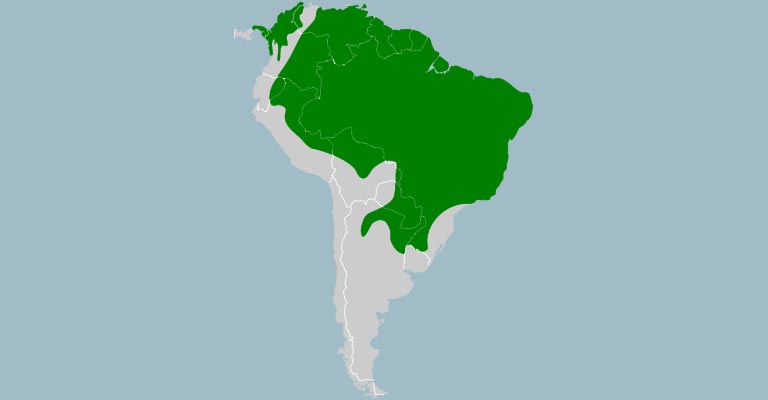
The Greater Ani’s range extends from southern Mexico to northern Argentina. A range map would illustrate their distribution across various countries, highlighting the diverse ecosystems they inhabit.
Nesting
One of the most intriguing aspects of the Greater Ani’s life history is its communal nesting behaviour. Multiple pairs collaborate to build a single nest, where each female lays her eggs.
The entire group participates in incubation and chick-rearing, showcasing high social cooperation within the flock.
Here’s a table detailing the nesting details of the Greater Ani (Crotophaga major):
| Nesting Details | Facts |
| Clutch Size | 4 to 6 eggs |
| Number of Broods | Typically 1 per breeding season |
| Egg Length | Approximately 3.2 centimeters (1.3 inches) |
| Egg Width | Approximately 2.5 centimeters (1 inch) |
| Incubation Period | Around 13 to 14 days |
| Nestling Period | Approximately 10 to 12 days |
| Egg Description | Smooth, glossy, and pale blue-green with a slightly chalky texture |
These details provide insights into the reproductive behaviour of the Greater Ani, including the number of eggs laid, their size, the duration of incubation, and the period during which the nestlings are cared for by the adult birds.
Breeding
Breeding typically occurs during the rainy season when food resources are abundant.
The cooperative nesting strategy ensures that multiple adults contribute to the success of the offspring, increasing the chances of survival in the challenging environment.
Diseases
While Greater Anis are relatively hardy, they can be susceptible to various avian diseases.
Common issues include parasitic infections and respiratory ailments. Monitoring the health of individuals within a flock is crucial for the overall population’s well-being.
Treatment
Veterinary care and disease monitoring are essential components of the conservation efforts for Greater Anis.
Prompt treatment of infections, habitat conservation, and protection play a crucial role in maintaining healthy populations.
Conservation
Conservation efforts for the Greater Ani involve preserving their natural habitats, especially the open landscapes they prefer.
Addressing threats such as habitat loss, agricultural practices, and climate change is vital for ensuring the long-term survival of this unique bird species.
The life history of the Greater Ani encompasses a range of fascinating behaviours, from cooperative nesting to communal foraging.
Understanding their food habits and habitat preferences and addressing conservation challenges are critical for the sustained well-being of this captivating bird species.
10 Fun Facts About Greater Ani
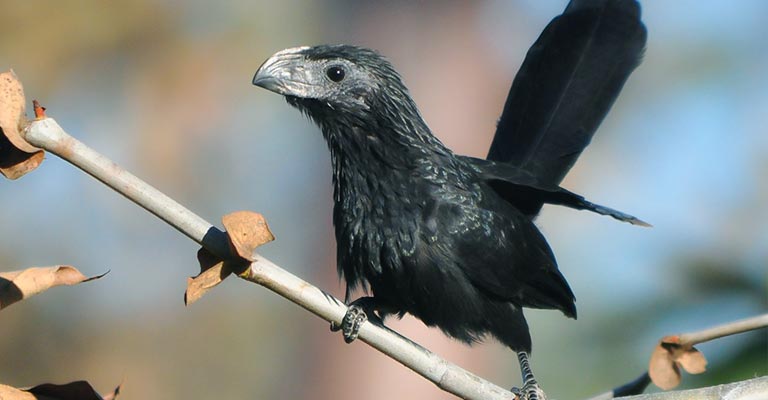
The Greater Ani (Crotophaga major) is a charismatic bird species native to the Americas, captivating observers with its distinctive features and intriguing behaviours.
Here are 10 fun facts that shed light on the unique characteristics of the Greater Ani:
- Communal Nesting: Greater Anis engage in communal nesting, with multiple pairs contributing to constructing and maintaining a single nest. This cooperative behaviour is a remarkable display of social interaction within the flock.
- Coordinated Incubation: All group members take turns keeping the eggs warm during incubation. This cooperative effort ensures the successful development of the eggs and highlights the communal nature of their breeding strategy.
- Multiple Egg Layers: A single nest can contain eggs from several females within the flock. This phenomenon, known as “egg-dumping,” is a distinctive reproductive strategy among the Greater Anis.
- Glossy Black Plumage: The Greater Ani boasts uniformly black plumage, creating a sleek and striking appearance. This feature sets them apart from many other bird species in their habitat.
- Yellow Facial Features: Their yellow eyes and bright yellow bills contrast their black plumage, enhancing their visual appeal. These distinctive facial features contribute to easy identification.
- Distinctive Crest: Sporting an elongated crest on their heads, Greater Anis can raise and lower these feathers. The crest adds a touch of elegance to their appearance, especially during displays or moments of excitement.
- Hop-and-Run Foraging: On the ground, Greater Anis display a unique foraging behaviour characterized by a distinctive hop-and-run movement. This peculiar walking style is both amusing and efficient for capturing prey.
- Varied Vocalizations: Greater Anis are vocal birds producing various sounds, including croaks, cackles, and whistles. These vocalizations serve multiple purposes, from communication within the flock to courtship displays.
- Range of Habitats: While commonly found in open areas like grasslands and savannas, Greater Anis are adaptable and can thrive in diverse habitats, including agricultural fields and scrubby landscapes.
- Social Foraging: Cooperative foraging is a key aspect of their social behaviour. Greater Anis work together to locate and capture insects and small vertebrates, showcasing the benefits of collaboration in obtaining food resources.
The Greater Ani’s charm goes beyond its striking appearance, encompassing fascinating behaviours and cooperative strategies that make it a noteworthy species in the avian world.
Wrapping Up
The Greater Ani, with its glossy black plumage, yellow features, and unique behaviours, stands as a captivating avian species in the Americas.
From communal nesting and cooperative incubation to distinctive vocalizations and social foraging, the bird’s life history is a testament to the fascinating intricacies of nature.
Its adaptability across various habitats and its cooperative breeding strategies highlight the resilience and social dynamics that contribute to the Greater Ani’s distinct charm in the avian world. Thank you so much.